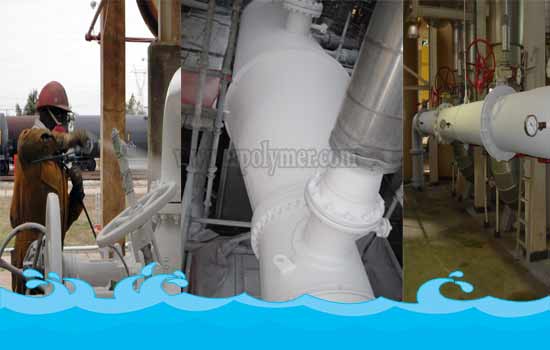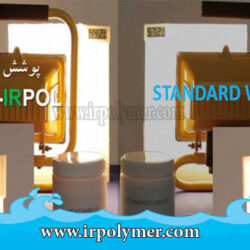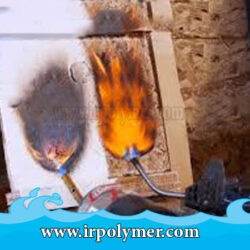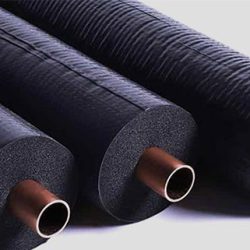Heat and Thermal Insulation Paint by ABtank is a specialized product designed to prevent energy loss and reduce costs in industries and buildings. There are numerous tools to create thermal insulation, but using new and innovative methods not only reduces implementation costs but also significantly speeds up the process.
Types of Nano Paints Based on Application
- Nano Fireproof Paint
- Nano Antibacterial Paint
- Nano Thermal Insulation Paint
- Nano Hydrophobic Paint
- Nano Moisture Insulation Paint
Among these, we will focus on industrial nano insulation paint, which comes in two types: thermal and moisture. As their names suggest, their applications vary.
What is Thermal Insulation Paint?
To prevent heat loss in heating systems or various industrial sections, thermal insulation paint can be used. Due to its very thin layer, high quality, and low cost, nano thermal insulation paint is considered one of the best methods for heat and thermal insulation. This tool, which can be used for insulating buildings, warehouses, pipelines, tanks, and more, is highly popular due to its quick implementation and can reduce energy consumption costs by up to 50%.
Advantages of Heat and Thermal Insulation Paints
- Cost-effective
- Very low thermal transfer coefficient
- Quick and easy application on both metal and non-metal surfaces
- Environmentally friendly
- Single-component coating
- Can be applied with a spray gun
- Elastic adhesion, high durability, and resistance to water penetration
- Significant surface temperature reduction with thin layers (200 to 3000 microns)
- No corrosion under the surface of these insulations
- Light and environmental stability in outdoor spaces
- Can be applied on complex geometries
- Can be applied both online and offline
- Quick and low-cost repairs
- Reduces energy loss by up to 70%
- Available in various colors
- Low execution costs
- Suitable replacement for traditional (rock wool and glass wool) and modern (elastomeric) coatings
- Does not produce airborne particles or cause respiratory and skin diseases
- Anti-fungal and anti-algae
Execution Instructions for Thermal Insulation Paints
- Effectively mix the paint container with an electric mixer.
- No need for dilution.
- Application with a spray gun with a nozzle diameter of 2.5 to 3.5 mm is possible.
- The surface must be free of dust and grease before insulation.
- The maximum thickness for each spray layer should be around 300 microns (higher thickness can lead to micro-cracks).
- The thickness of thermal insulation paint can be several millimeters.
- Industrial gloves and masks must be used throughout the process.
- Micro-cracks on the final coating can be filled with a thin film of paint.
Applications of Thermal Insulation Paint
- Pipelines in oil, gas, and petrochemical industries
- Insulating roofs and walls of warehouses
- Tanks, reactors, and towers
- Insulating hot and cold water pipelines
- Insulating various containers, vehicle cabins, and trailers
- Coating transport tanks for hot and cold materials
Types of Insulation Paint
Flex Insulation Paint
Using a-flex and ak-flex insulation paints allows you to quickly and easily insulate the desired areas, preventing damage caused by moisture or heat penetration. Due to its easy application and high quality, along with water-resistant resins and strengthening additives, this type of paint can be an excellent replacement for traditional methods, suitable for various applications.
Industrial Nano Insulation Paint
This type of industrial nano insulation paint is intended for metal surfaces exposed to high temperatures. Due to their high resistance to heat, they are particularly useful for covering high-temperature surfaces. Besides walls and roofs, they are also used for insulating facilities, pipes, and tanks. Hence, industrial nano insulation paints are predominantly used in factories, workshops, warehouses, facilities, and for tank coverage and other industrial purposes.
Building Nano Insulation Paint
Additionally, building nano insulation paint is used for applications such as painting buildings. This paint acts as an insulator by creating pores on the covered surfaces, resisting heat penetration in summer and heat loss in winter, improving building energy efficiency by up to 40%.
Because it is used on exterior surfaces and facilities, and given the wide range of available colors, it does not limit building design and decoration. Aside from its insulating properties, it is also non-flammable and resistant to pollution, making it ideal for laboratories and hospitals.
Waterproof Nano Insulation Paint for Pools
Another highly used type is waterproof nano insulation paint, ideal for preparing water-resistant surfaces. This type of nano paint provides clean and smooth surfaces, offering economic advantages by saving time and energy.





